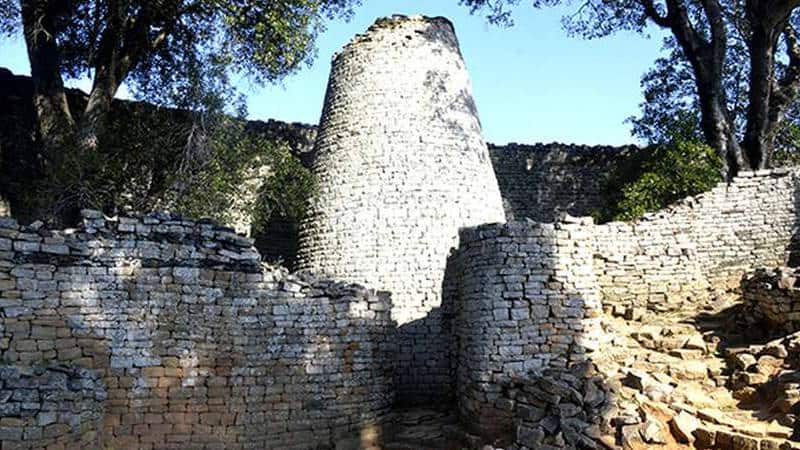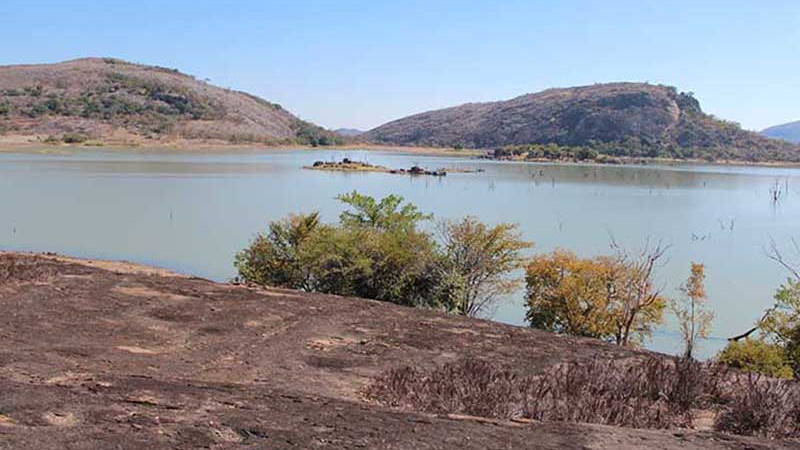The Great Zimbabwe Ruins is located 25 km southeast of Masvingo town. It is a UNESCO world heritage site and the ruins are one of the most important archaeological sites in Africa.
The Great Zimbabwe Ruins
A great city existed here from the 11th century on, with over 1,000 inhabitants. Great Zimbabwe (“stone houses”) was a main regional trading center, its wealth associated with Arab gold trading. There were also trade links with East Africa (Kilwa), and fragments of Persian and Chinese pottery has been found at the site.
The site was abandoned in the 15th century (for Khami Ruins) because of a lack of food and firewood.

The ruins are spread out over three main areas: the Hill Ruins, the Great Enclosure, and the Valley Ruins. Great Zimbabwe has been adopted as a national monument by the government, with the modern state being named after it.
The word “Great” distinguishes the site from the many hundreds of smaller ruins, spread across the Zimbabwe Highveld.
There are 200 such sites in southern Africa, such as Bumbusi and Nalatale in Zimbabwe and Manyikeni in Mozambique, with monumental, mortar-less walls with this being the largest.
Lake Mutirikwe
Lake Mutirikwe, formerly Lake Kyle, lies in southeastern Zimbabwe, southeast of the town of Masvingo town and adjacent to The Great Zimbabwe Ruins. It covers approximately 90 hectares and was created in 1960 with the construction of the Kyle Dam wall on the Mutirikwe River.
The dam was built to provide irrigation water for the Lowveld farming estates located to the southwest around the town of Triangle, where the main crop is sugar cane.
When the lake is full to capacity, it is the second-largest expanse of open water in the country after the expansive Lake Kariba.

Lake Kyle Recreational Park, which includes a game-viewing area, lies on the northern shore, while there is a small recreational park on the southern shore.
The water level fluctuates widely due to irrigation demands and seasonal rainfall.
